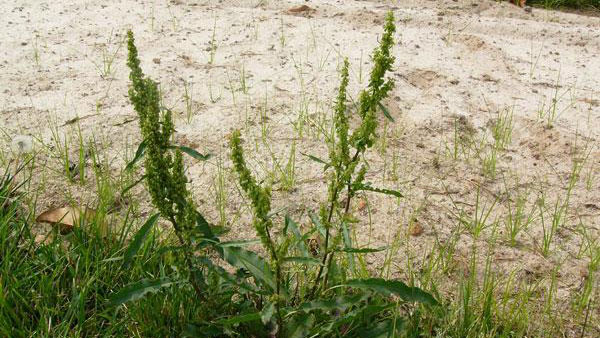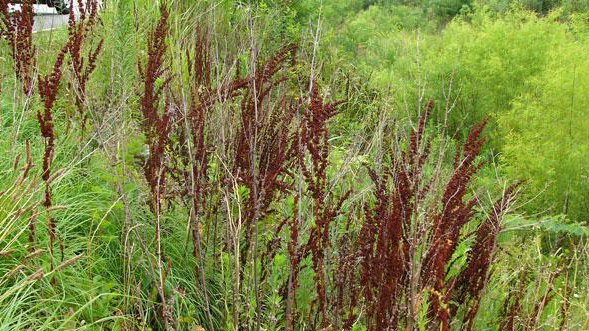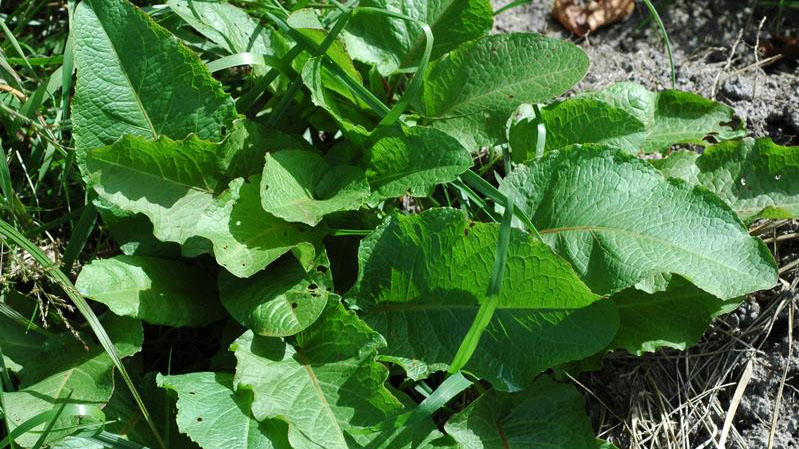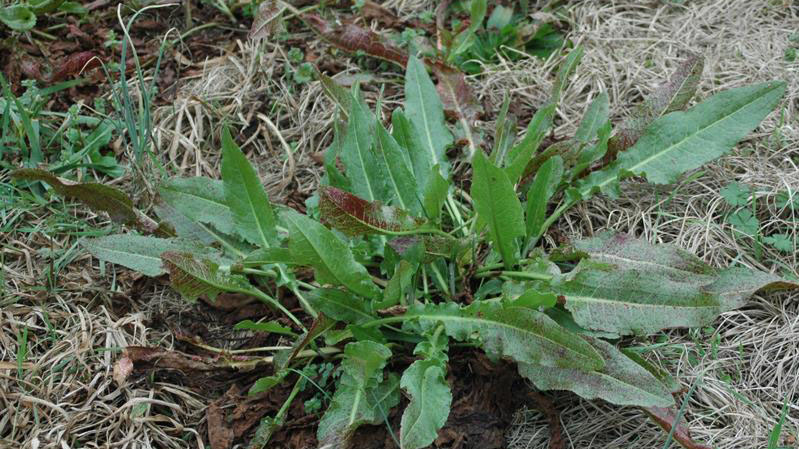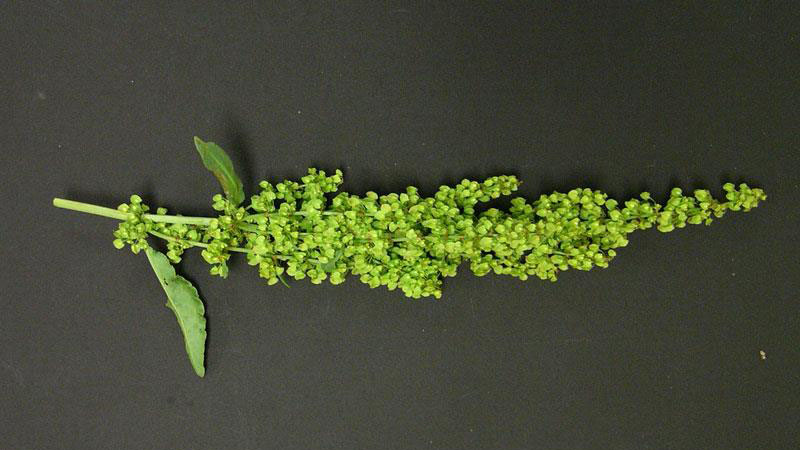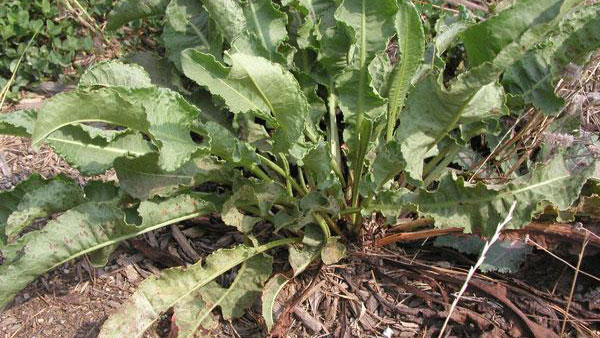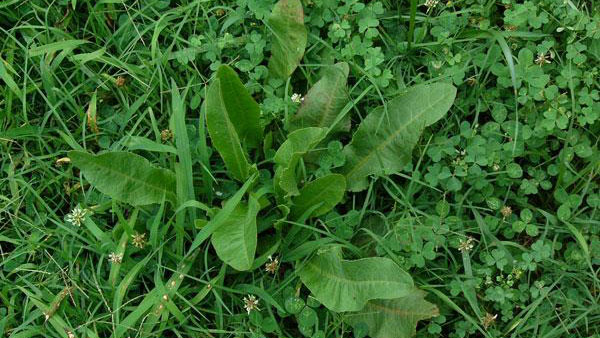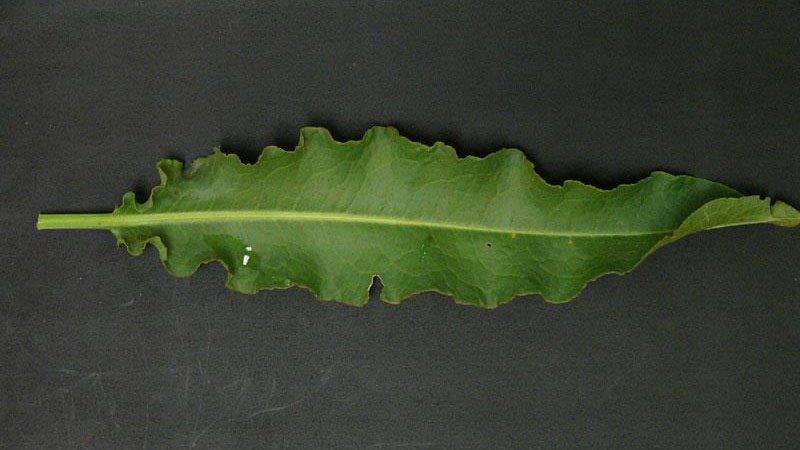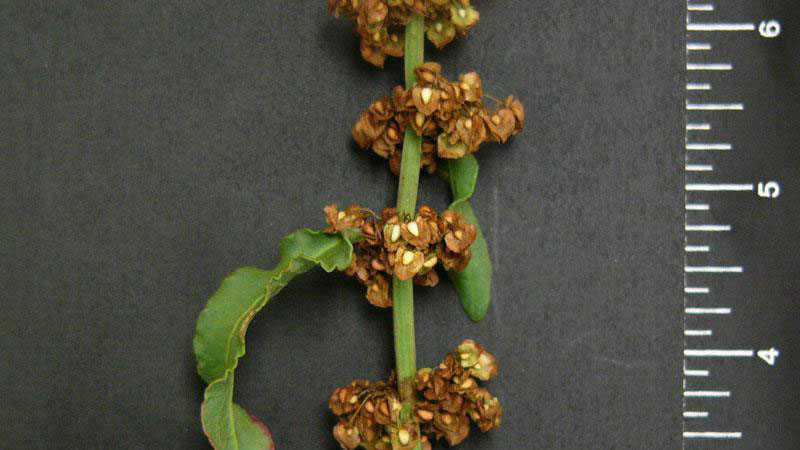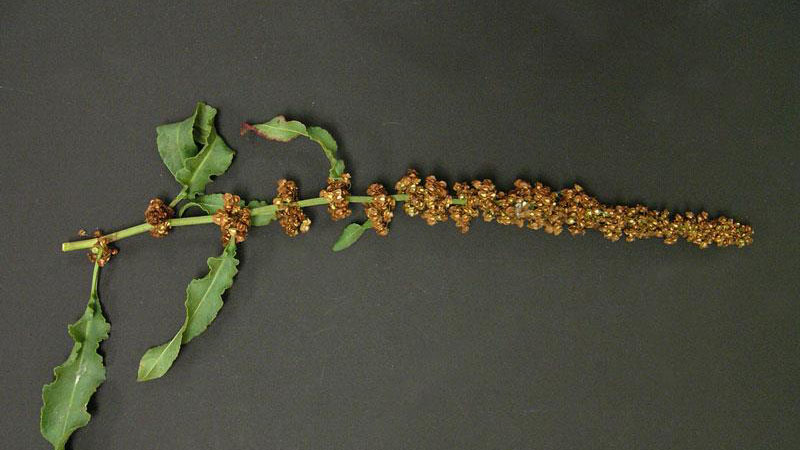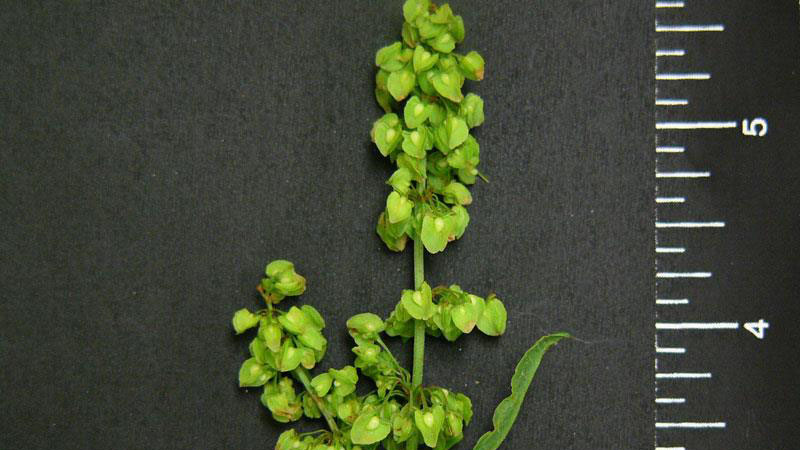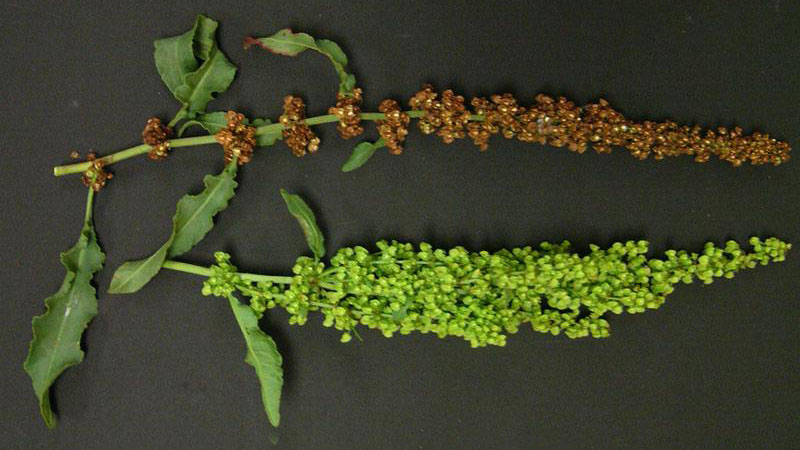Curly Dock
en Español / em Português
El inglés es el idioma de control de esta página. En la medida en que haya algún conflicto entre la traducción al inglés y la traducción, el inglés prevalece.
Al hacer clic en el enlace de traducción se activa un servicio de traducción gratuito para convertir la página al español. Al igual que con cualquier traducción por Internet, la conversión no es sensible al contexto y puede que no traduzca el texto en su significado original. NC State Extension no garantiza la exactitud del texto traducido. Por favor, tenga en cuenta que algunas aplicaciones y/o servicios pueden no funcionar como se espera cuando se traducen.
Português
Inglês é o idioma de controle desta página. Na medida que haja algum conflito entre o texto original em Inglês e a tradução, o Inglês prevalece.
Ao clicar no link de tradução, um serviço gratuito de tradução será ativado para converter a página para o Português. Como em qualquer tradução pela internet, a conversão não é sensivel ao contexto e pode não ocorrer a tradução para o significado orginal. O serviço de Extensão da Carolina do Norte (NC State Extension) não garante a exatidão do texto traduzido. Por favor, observe que algumas funções ou serviços podem não funcionar como esperado após a tradução.
English
English is the controlling language of this page. To the extent there is any conflict between the English text and the translation, English controls.
Clicking on the translation link activates a free translation service to convert the page to Spanish. As with any Internet translation, the conversion is not context-sensitive and may not translate the text to its original meaning. NC State Extension does not guarantee the accuracy of the translated text. Please note that some applications and/or services may not function as expected when translated.
Collapse ▲Description
Curly dock (Rumex crispus) is a perennial weed with a thick taproot. Leaves grow mostly at the base of the plant and are lance-shaped with wavy or curly margins. Leaf blades are 6 to 8 inches long and 1 to 2 inches wide. The green leaves may be tinged with reddish purple. Curly dock seldom produces seed in maintained turf. When the plants grow unchecked, small greenish flowers are produced in clusters at the top of the main stems. Flowers become reddish-brown at maturity. The shiny, reddish-brown triangular seed is surrounded by three sepals.
Cultural Control
Perennial broadleaf turf weeds are capable of living more than two years. They thrive in weak, thin turf; golf fairways and roughs; home lawns; playfields; and industrial grounds. Proper turf maintenance is the key to control of this weed. First, select adapted turfgrass cultivars for your area and then properly fertilize, mow, and water to encourage dense growth.
Chemical Control
| Herbicide and Formulation | Amount of Formulation per 1,000 sq ft | Amount of Formulation per Acre | Pounds Active Ingredient per Acre |
|---|---|---|---|
| Preemergence and Postemergence Control | |||
| mesotrione, MOA 27 (4 SC) | 0.092 to 0.183 fl oz | 4 to 8 fl oz | 0.125 to 0.25 |
| Precaution and Remarks: Use on residential turf, golf courses (not greens) and sod farms for pre- and postemergence weed control. Tolerant turfgrasses include St. Augustinegrass, centipedegrass, tall fescue, fine fescue, Kentucky bluegrass, and perennial ryegrass. Add a nonionic surfactant and repeat application after 2 to 3 weeks for improved postemergence control. Tank mix with prodiamine 65 WG for extended preemergence grassy weed control. Can be applied at seeding to all tolerant grasses except fine fescue. After turf germination, wait 4 weeks or until turf has been mowed twice before making a postemergence application. Also controls henbit, chickweed, dandelion, white clover, Florida betony, Florida pusley, ground ivy, oxalis, wild violet, creeping bentgrass, and yellow nutsedge. | |||
| [sulfentrazone + prodiamine], MOA 14 + 3 (4 SC) (Echelon) | 0.184 to 0.826 fl oz | 0.5 to 2.25 pt | 0.25 to 1.125 |
| Precaution and Remarks: For use in residential and institutional lawns, athletic fields, sod farms, golf course fairways and roughs, roadsides, utility right-of-ways, railways, and industrial areas. Apply to turf following a second mowing if a good root system has been established. Apply up to 12 fluid ounces per acre to bentgrass at 0.5 inch or higher, fine fescue, and perennial ryegrass. Apply 18 to 24 fluid ounces per acre to perennial bluegrass, tall fescue, and all warm season grasses except St. Augustinegrass (do not apply) and bermudagrass (apply 18 to 36 fluid ounces per acre). For sod production, apply 6 months after establishment, and do not harvest within 3 months. Do not apply with adjuvants or surfactants. [Sulfentrazone + prodiamine should not be applied to cool-season turf with N-containing fertilizers unless some short-term discoloration is tolerable. | |||
| Postemergence Control | |||
| 2,4-D amine, MOA 4 (4 SL) (various brands) | 3 to 4 tsp | 1.5 to 2 pt | 0.75 to 1 |
| Precaution and Remarks: Cut rate one-half for bentgrass, carpetgrass, centipedegrass, and St. Augustinegrass. Spray when weeds are young and actively growing. To reduce danger of injury to flowers and ornamentals by spray drift, use low pressure and do not spray on windy days. | |||
| dicamba, MOA 4 (4 SL) (various brands) | 1 to 2 tsp | 0.5 to 1 pt | 0.25 to 0.5 |
| Precaution and Remarks: Apply as foliar spray to growing weeds. Prevent injury to ornamentals. Avoid rooting zone of shallow-rooted trees and shrubs. | |||
| diglycolamine, MOA 4 (4 SL) (various brands) | 1 to 4.5 tsp | 0.5 to 2 pt | 0.25 to 1 |
| Precaution and Remarks: Do not exceed 1 pint per acre on bentgrass, carpetgrass, buffalograss, and St. Augustinegrass. Apply to newly seeded grasses after the second mowing. Do not exceed 0.25 pint per acre on extended sensitve plant roots on sandy soils and 0.5 pint per acre on clay soils. | |||
| clopyralid, MOA 4 (3 EC) (Lontrel T&O) | 0.1 to 0.5 fl oz | 0.25 to 1.33 pt | 0.09 to 0.5 |
| Precaution and Remarks: Do not apply to home lawns. May be used on bentgrass, Kentucky bluegrass, creeping, red, chewings, sheep and tall fescue, perennial ryegrass, bermudagrass, bahiagrass, buffalograss, centipedegrass, zoysiagrass, and St. Augustinegrass. Do not apply to putting greens and tees. Should be applied in a minimum of 20 gallons of water per acre. Surfactants are not necessary. Do not apply to exposed roots of certain trees and shrubs (legumes such as acacia, locust, mimosa, redbud, or mesquite) or Tilia spp. Do not use treated clippings for mulching and compost during the growing season of application. | |||
| pyraflufen ethyl, MOA 14 (0.177 SC) (Octane 2% SC) | 0.016 to 0.092 fl oz | 0.7 to 4 fl oz | 0.000938 to 0.0055 |
| Precaution and Remarks: Used in established sod farm and ornamental turf by commercial applicators and professional landscapers only. Turf can be newly seeded, sodded, or sprigged as long as it is established and not under stress. Tolerant turfgrasses include bermudagrass, centipedegrass, St. Augustinegrass, zoysiagrass, tall fescue, perennial ryegrass, perennial bluegrass, and creeping bentgrass (not greens or tees). Apply 1 to 4 fluid ounces alone to 3- to 6-inch tall weeds. For larger weeds and broader spectrum control, apply 0.75 to 1.5 fluid ounces and tank mix with 2,4-D, mecoprop, dicamba, chloroprop, MCPA, triclopyr, or fluroxypyr. | |||
Species Data
- GROWTH SEASON / LIFE CYCLE
- perennial weed
- GROWTH HABIT
- LEAFLET NUMBER
- one
- LEAF MARGIN
- wavy / crinkled
- LEAF HAIRS
- none
- LEAF / LEAFLET SHAPE
- linear / oblong
Figure 13, Figure 14
- linear / oblong
- LEAF WIDTH
- 1 - 2 inches
- LEAF VENATION
- pinnate
- LEAF ARRANGEMENT
- alternate
- ROOT TYPE
- taproot
- FLOWER COLOR



